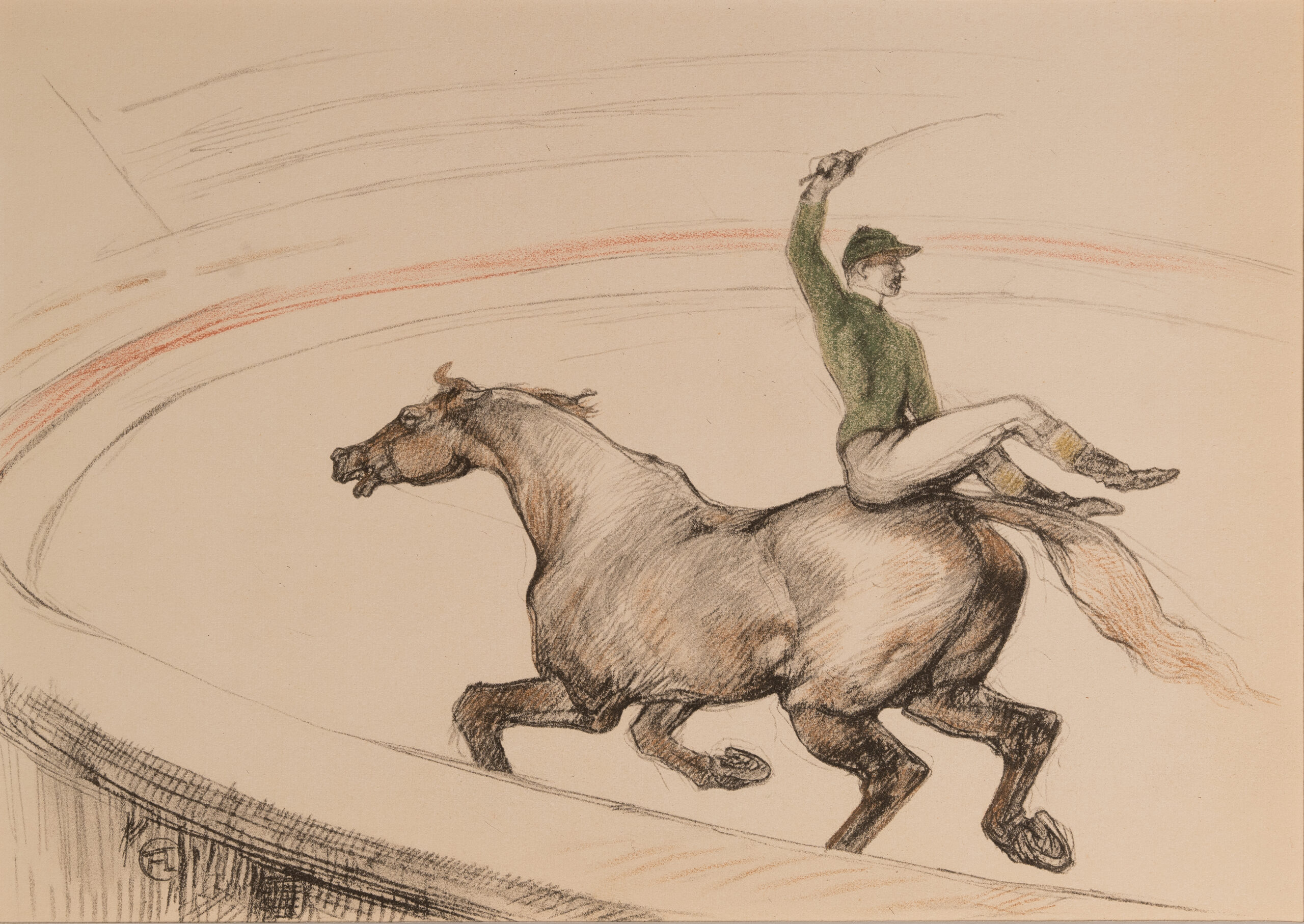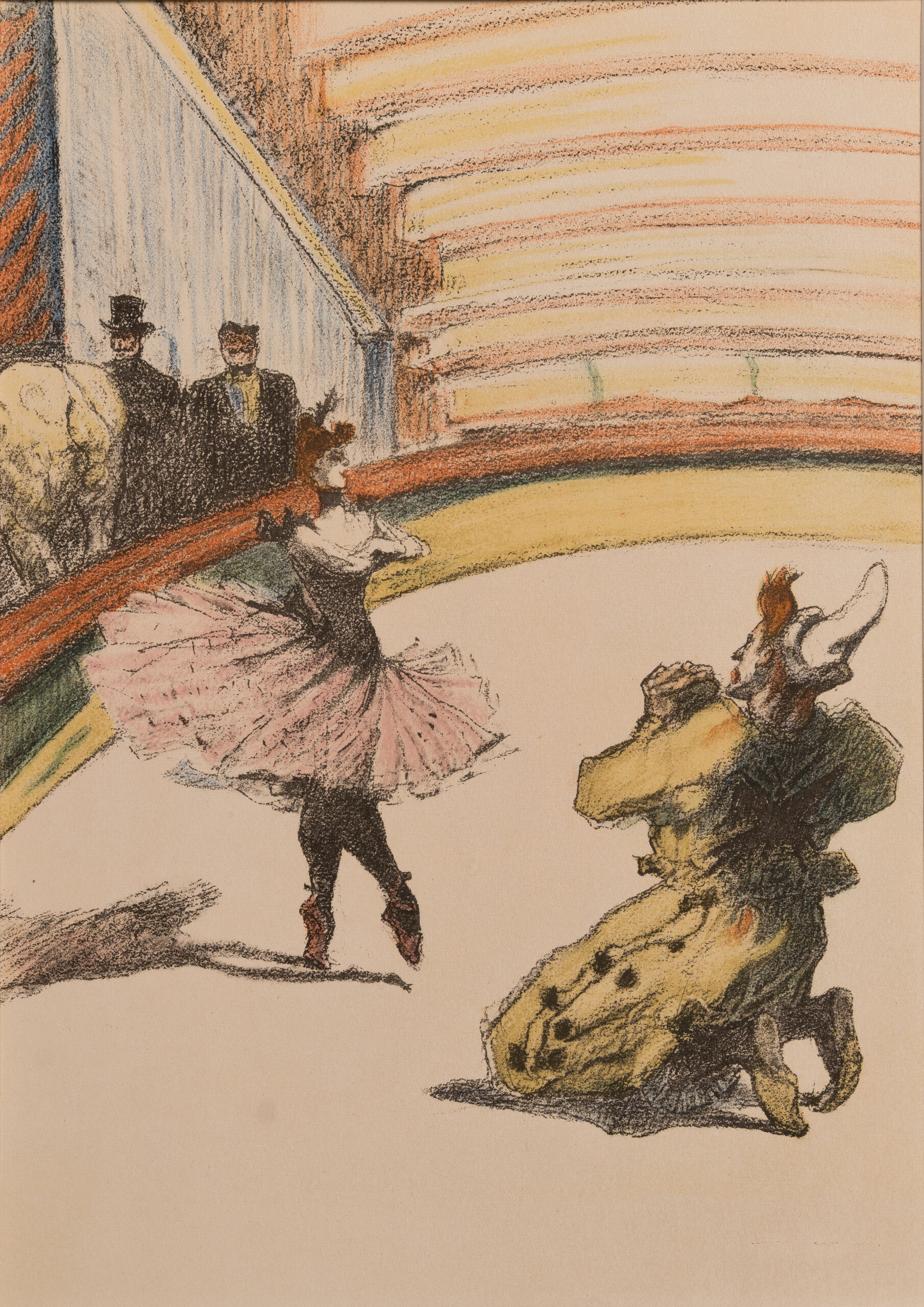
HENRI DE TOULOUSE-LAUTREC, Il Circo – Fantino. Litografia – Ed. 1905. Parigi (Francia)
There are cases when an artist manages to influence culture even after his death. It happened to Vincent van Gogh, who became famous after his death, but it also happened to Henri de Toulouse-Lautrec, an emblematic figure of the Belle Époque who left an impressive artistic legacy despite his short career.
Famous for works in which he depicted Parisian nightlife, Toulouse-Lautrec produced more than some 737 paintings, more than 4,748 drawings, a figure close to 270 watercolors, and also produced numerous prints and advertising posters, continually experimenting with new forms and techniques. His passion for graphic art, especially posters and lithographic prints, made a profound mark on the advertising industry, proving that art can be as much a means of communication as a form of personal expression.
Toulouse-Lautrec’s posthumous works

HENRI DE TOULOUSE-LAUTREC, Il Circo – Elefante in libertà. Litografia – Ed. 1905. Parigi (Francia)
Toulouse-Lautrec lived during an era of extraordinary technological revolutions, in which the use of printing techniques and photography were becoming increasingly important to an artist. These changes not only influenced his style but also amplified his interest in color lithography, a novelty he exploited to create some of his best-known works.
For Toulouse-Lautrec, creating a poster or the cover of a theater program was as serious a commitment as painting a picture. It was a vision that profoundly transformed the role of the artist in the modern era.
TOULOUSE-LAUTREC’S POSTHUMOUS FAME
Despite his genius, Toulouse-Lautrec’s fame was mainly consolidated after his death, thanks to the efforts of his friend Maurice Joyant.
Joyant not only organized the first posthumous exhibitions of Toulouse-Lautrec’s works, but significantly helped build the artist’s myth by persuading his mother to donate many of his creations to the Musée Toulouse-Lautrec in Albi. His collaboration with the prominent art dealer Adolphe Goupil, moreover, was crucial to the dissemination of his works, making them accessible to an increasingly wide audience.
THE POSTHUMOUS WORKS
One of the most poignant examples of the legacy left by Toulouse-Lautrec is the “Au Cirque” series, a collection of 39 drawings created during his stay in a sanatorium in 1899.
These works, which capture scenes of circus life with intensity and sensitivity, were published posthumously by Joyant in 1905 and have continued to arouse admiration and interest. The second edition of this collection, completed in 1931, allowed these works to reach an even wider audience, further solidifying the link between Toulouse-Lautrec and the art of the Belle Époque.

HENRI DE TOULOUSE-LAUTREC, Il Circo –La resa. Litografia – Ed. 1905. Parigi (Francia)
Toulouse-Lautrec’s work is characterized by a personal and innovative imprint, yet it also remains a testimony to an era and an artist who was able to turn every personal and professional challenge into an opportunity to renew his art, influencing the history of graphic design and painting.

